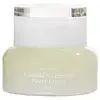What's inside
What's inside
 Key Ingredients
Key Ingredients

 Benefits
Benefits

 Concerns
Concerns

No concerns
 Ingredients Side-by-side
Ingredients Side-by-side

Water
Skin ConditioningPanthenol 10%
Skin ConditioningSqualane
EmollientButylene Glycol
Humectant1,2-Hexanediol
Skin ConditioningNiacinamide
SmoothingBambusa Vulgaris Extract
Skin ConditioningHydrolyzed Jojoba Esters
Skin ConditioningAcrylates/C10-30 Alkyl Acrylate Crosspolymer
Emulsion StabilisingAmmonium Acryloyldimethyltaurate/Vp Copolymer
Hydroxyacetophenone
AntioxidantTromethamine
BufferingDipotassium Glycyrrhizate
HumectantEthylhexylglycerin
Skin ConditioningXanthan Gum
EmulsifyingDisodium EDTA
Sodium Hyaluronate
HumectantMadecassoside
AntioxidantAsiaticoside
AntioxidantAsiatic Acid
Skin ConditioningMadecassic Acid
Skin ConditioningCopper Tripeptide-1
Skin ConditioningWater, Panthenol 10%, Squalane, Butylene Glycol, 1,2-Hexanediol, Niacinamide, Bambusa Vulgaris Extract, Hydrolyzed Jojoba Esters, Acrylates/C10-30 Alkyl Acrylate Crosspolymer, Ammonium Acryloyldimethyltaurate/Vp Copolymer, Hydroxyacetophenone, Tromethamine, Dipotassium Glycyrrhizate, Ethylhexylglycerin, Xanthan Gum, Disodium EDTA, Sodium Hyaluronate, Madecassoside, Asiaticoside, Asiatic Acid, Madecassic Acid, Copper Tripeptide-1
Water
Skin ConditioningCyclopentasiloxane
EmollientCamellia Sinensis Extract
AntioxidantCetearyl Alcohol
EmollientDimethicone
EmollientCentella Asiatica Extract
CleansingNiacinamide
SmoothingGlycerin
HumectantPEG-20
HumectantPEG/PPG-20/20 Phenylisopropyl Caprylyl Dimethicone
Emulsion StabilisingPropylene Glycol Dibenzoate
Skin ConditioningSodium PCA
HumectantSodium Hyaluronate
HumectantBisabolol
MaskingCarbomer
Emulsion StabilisingPolyacrylamide
C13-14 Isoparaffin
EmollientLaureth-7
EmulsifyingPEG-20 Stearate
EmulsifyingPolysorbate 20
EmulsifyingTetrasodium EDTA
Sodium Benzoate
MaskingPhenoxyethanol
PreservativeCaramel
Cosmetic ColorantTriethanolamine
BufferingCI 19140
Cosmetic ColorantCI 74160
Cosmetic ColorantWater, Cyclopentasiloxane, Camellia Sinensis Extract, Cetearyl Alcohol, Dimethicone, Centella Asiatica Extract, Niacinamide, Glycerin, PEG-20, PEG/PPG-20/20 Phenylisopropyl Caprylyl Dimethicone, Propylene Glycol Dibenzoate, Sodium PCA, Sodium Hyaluronate, Bisabolol, Carbomer, Polyacrylamide, C13-14 Isoparaffin, Laureth-7, PEG-20 Stearate, Polysorbate 20, Tetrasodium EDTA, Sodium Benzoate, Phenoxyethanol, Caramel, Triethanolamine, CI 19140, CI 74160
 Reviews
Reviews

Ingredients Explained
These ingredients are found in both products.
Ingredients higher up in an ingredient list are typically present in a larger amount.
Niacinamide is a multitasking form of vitamin B3 that strengthens the skin barrier, reduces pores and dark spots, regulates oil, and improves signs of aging.
And the best part? It's gentle and well-tolerated by most skin types, including sensitive and reactive skin.
You might have heard of "niacin flush", or the reddening of skin that causes itchiness. Niacinamide has not been found to cause this.
In very rare cases, some individuals may not be able to tolerate niacinamide at all or experience an allergic reaction to it.
If you are experiencing flaking, irritation, and dryness with this ingredient, be sure to double check all your products as this ingredient can be found in all categories of skincare.
When incorporating niacinamide into your routine, look out for concentration amounts. Typically, 5% niacinamide provides benefits such as fading dark spots. However, if you have sensitive skin, it is better to begin with a smaller concentration.
When you apply niacinamide to your skin, your body converts it into nicotinamide adenine dinucleotide (NAD). NAD is an essential coenzyme that is already found in your cells as "fuel" and powers countless biological processes.
In your skin, NAD helps repair cell damage, produce new healthy cells, support collagen production, strengthen the skin barrier, and fight environmental stressors (like UV and pollution).
Our natural NAD levels start to decline with age, leading to slower skin repair, visible aging, and a weaker skin barrier. By providing your skin niacinamide, you're recharging your skin's NAD levels. This leads to stronger, healthier, and younger looking skin.
Another name for vitamin B3 is nicotinamide. This vitamin is water-soluble and our bodies don't store it. We obtain Vitamin B3 from either food or skincare. Meat, fish, wheat, yeast, and leafy greens contain vitamin B3.
The type of niacinamide used in skincare is synthetically created.
Learn more about NiacinamideSodium Hyaluronate is hyaluronic acid's salt form. It is commonly derived from the sodium salt of hyaluronic acid.
Like hyaluronic acid, it is great at holding water and acts as a humectant. This makes it a great skin hydrating ingredient.
Sodium Hyaluronate is naturally occurring in our bodies and is mostly found in eye fluid and joints.
These are some other common types of Hyaluronic Acid:
Learn more about Sodium HyaluronateWater. It's the most common cosmetic ingredient of all. You'll usually see it at the top of ingredient lists, meaning that it makes up the largest part of the product.
So why is it so popular? Water most often acts as a solvent - this means that it helps dissolve other ingredients into the formulation.
You'll also recognize water as that liquid we all need to stay alive. If you see this, drink a glass of water. Stay hydrated!
Learn more about Water